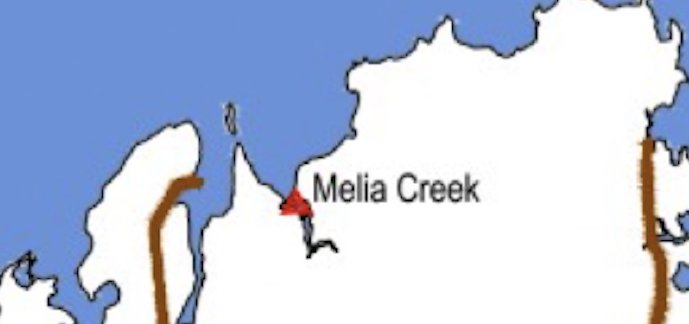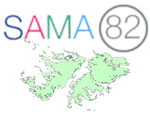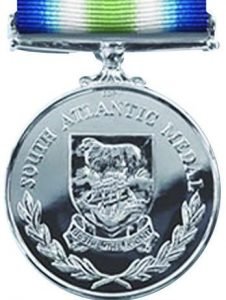
Dedicated to the memory of:

Corporal
Michael Melia
59 Independent Commando Squadron Royal Engineers
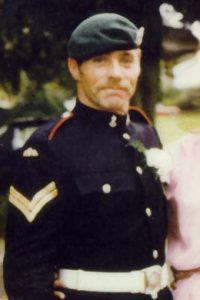

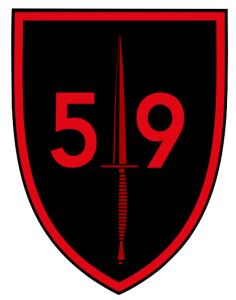
Michael (Mick) Melia was born at Oldham, Lancashire on the 21st September 1951. His father (Bill) and mother (Kitty) are no longer alive, but they had a large and loving family of six sons and three daughters; three of the nine children, including Mick, are now deceased.

Mick attended St Anselm’s Secondary Modern School, where his academic achievements were modest, but he excelled at sport, especially soccer. Leaving school at 15, he trained as a welder, then joined the Regular Army in 1971 as a Sapper in the Royal Engineers, following time as a Territorial. In this respect he was following the example of his father who had served with the Sappers in WW2; three of his brothers also had Armed Forces experience, Bill in the East Lancashire Regiment, Jim in the RAF and Tony in the Royal Navy’s Fleet Air Arm.
After basic training, Mick then volunteered for parachute training, served with ‘9 PARA’ – the famous Airborne Sapper Squadron – in Aldershot and Belize, then undertook Commando training for service with 59 Independent Commando Squadron based in Plymouth. Here, his footballing skills developed significantly, and he also displayed great skill and ability in the sport of canoeing.

Mick, bottom right, in the victorious rowing team, outside the R.E. museum, Chatham. 1967.
His physical prowess then led to selection as one of the Training Team preparing Army volunteers for the famous Royal Marines ‘All Arms’ Commando Course. Like so many of his fine young friends and colleagues, Mick had chosen a path of excellence in the van of British infantry action, leading by example and wearing either the red or green beret, both of which he had earned the right to wear through sterling personal effort.

Mick left, best man at a friend’s wedding
With 59 Commando Royal Engineers he sailed for the Falkland Islands in April 1982 and was attached to 2 PARA for the initial landings and the assault on Goose Green. In the dawn of May 28th, during the long and bitter fight for that settlement, Corporal Mick Melia was killed. Along with sixteen of his Parachute Regiment and Royal Marine colleagues, he was then buried at Ajax Bay on 30th May 1982.
In October 1978 Mick married Gill Sandy in Plymouth.

She survives him, along with his brothers Bill, Jim, Tony and Terry plus his older sisters Maureen and Jacqueline. Mick’s other brother and sister, Jack and Kathleen, have also died and are now with him. There were no children from his own marriage. Gill, his widow, remembers Mick as a wonderful man who could always make her laugh, even when her heart was filled with dread at the prospect of his departure for the South Atlantic in April 1982.
Mick’s body was brought back to England at the end of that momentous year. Following a funeral with full military honours, he was re-interred at the Weston Park cemetery in Plymouth, fittingly surrounded by three football pitches, and close to the rugged terrain of Dartmoor which he loved so much.
Text of the Reading Given at the Drumhead Service, Aldershot by Dr Rick Jolly OBE Chairman of SAMA82
Scene One: On the morning after, we pause and take stock. All the 64 wounded in the fight for Goose Green have survived and are now in the Hospital ship Uganda. It’s all down to their basic fitness, plus the wonderful work done by the RMO of 2 PARA, Captain Steve Hughes and his battlefield medic teams. What a tiger that young doc has been. 3 PARA are halfway across east Falkland on their long tab between Port San Carlos and Teal Inlet. They will be sweating – from their heavy loads, as well as worrying about that butcher’s bill which has had to be paid by their friends in this first real test of the Commando Brigade’s mission to regain the Islands. Their turn will surely come. The rumours concerning the numbers killed vary widely. All we know for certain is that the Commanding Officer has died at the head of his battalion.
Scene Two: A Naval helicopter arrives and settles gently onto the grass. The aircrewman beckons me forward, a look of real pain and resignation on his tired face. He is sharing the cabin with British dead – paratroopers from Goose Green. The bodies have been loaded in on top and alongside each other, their limbs frozen in rigor mortis, and each man’s combat smock or poncho cape pulled up over his face. Silently, sadly, we unload the bodies, placing each corpse on its own stretcher at the side of the Ajax Bay main building. The RSM of 2 PARA, Mr Malcolm Simpson, and a lightly injured company commander, Major Roger Jenner, help us in this task. The two men then stand back, quietly, near to tears, watching us. My little team of volunteer Royal Marines and I prepare the bodies, one by one – for burial. A journalist hovers in the background, obviously thinking about a photograph. Our thunderous looks indicate that production of a camera will result in him joining our waiting customers. I tell one of the boys to keep him – and any other outsiders – well away. The cold, wet clothing is deftly cut off. The pockets are examined, and a few personal possessions sorted, logged and put in a plastic bag. With the body stripped naked in the freezing air, I carefully examine each man to confirm his identity, and then – to certify both death and its primary cause. They have died in a fight to uphold Her Majesty’s sovereignty. They have died on British soil, and British law applies. To save the need for any later examination of the bodies by a Coroner, I must do the job properly now. Those names are burned into our memories: Dent, Bingley, Cork, Hardman, Melia, Illingsworth, Mechan, Wood, Barry, Dixon, Fletcher, Prior, Smith, Sullivan, Holman-Smith, and finally, ‘H’ himself. That same shy, almost quizzical smile lies on his face as easily in death as it did in life.
Like his men, the late Commanding Officer of the Second Battalion is lifted carefully and placed into an opaque, loose shroud. Gently and reverently, his body is then placed in the thick grey PVC body bag, with its heavy zip and carrying loops. Chief Petty Officer Scouse Davies writes each name on the outside using a broad felt-tip pen, big black capital letters contrasting sharply with the shiny grey of the bag.
We straighten up, our backs aching from an hour’s crouching and our bloodied fingers stiff with cold. The RSM looks me in the eye and salutes. It has not been a pleasant task by any means, but it has been an honour for us to undertake. We feel satisfied and glad that some sort of dignity has been restored to these brave men.
Scene Three: The funeral itself is also a fierce event. Goose Green must be defended against counter-attack, and there are friends back there who cannot be spared from duty for this service. On their behalf, nearly two hundred men stand in silence around the edge of the mass grave, heads uncovered, the majority with hands clasped loosely in prayer. Officers mix with soldiers, Paras with Royal Marines. Above us is the dome of a perfectly blue sky, while in the distance, snow gleams on the summit of Mount Simon. San Carlos Water is flat calm, the fleet lying still as the helicopters move busily from ship to ship with their loads, like bees on a summer’s day. The snarl of their engines and clatter of rotor blades carry for miles in the crisp cold air. It is a beautiful spot, this carefully chosen, silent hillside.
One by one, the bodies are carried down into the grave. Eleven of the seventeen being buried today are officers or NCOs, showing exactly what Airborne Forces and Commandos mean by the word ‘leadership’. Each body bag has six canvas handles, so the burial party consists of six men of similar rank to the deceased, plus one more senior escort. Major Chris Keeble, Acting CO of 2 PARA, precedes the four dead officers; RSM Simpson acts for the NCOs and private soldiers. A Sapper Major leads the group bearing Corporal Melia; Major Peter Cameron and six brother Royal Marine pilots carry Lieutenant Dick Nunn to his place of rest. Each body bag is covered by the Union Flag, which is removed when the precious load is in position. When all are in place, the 2nd Battalion Padre, David Cooper, begins the service. As his firm voice rolls through the now-familiar words, the emotional pressure winds up to a crescendo. Eyes that were red with tiredness and strain now brim over with silent tears that splash down onto the soggy earth.
‘Ashes to ashes, dust unto dust…’
The sound of handfuls of earth cast by the RSM onto taut body bags echoes like thunder around the grave. Led by Major General Moore, we salute our friends in a final, reluctant, farewell – then we turn, and walk away.
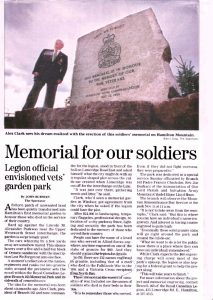
Memorial to war dead Royal Canadian Legion Branch, 163, Hamilton
_____________________________________________________________________
Family and friends are encouraged to contribute.
We will add information to this memorial as we receive it.
If you have a photo, an anecdote, or simply to say you remember him, we will be very pleased to hear from you, so please contact the sama office at [email protected]
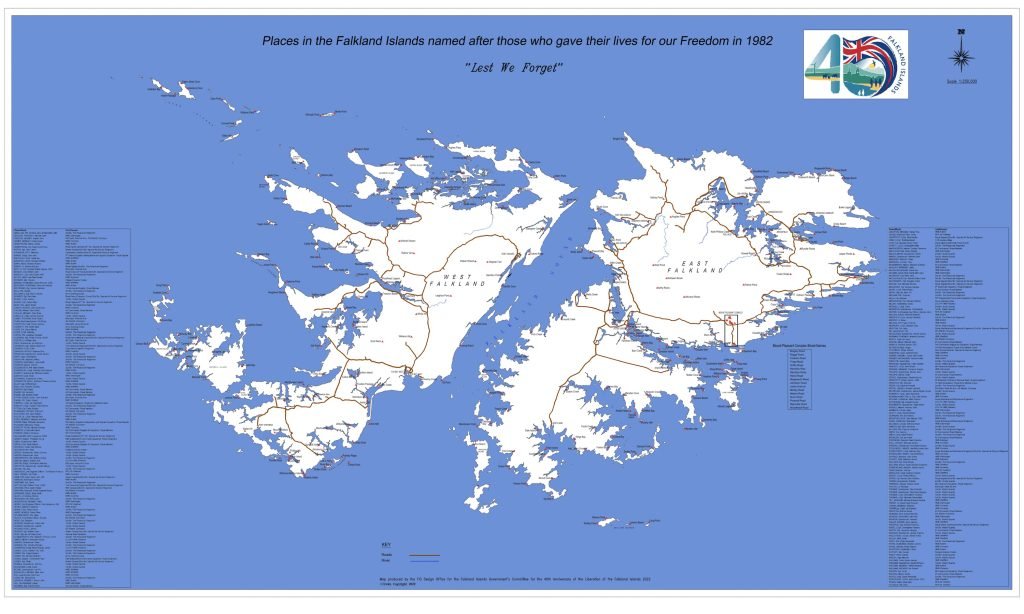
In 2022, as part of the 40th Anniversary commemorations, geographical features were identified and named after the fallen of 1982. MELIA CREEK is situated at the head of New Haven, on the Falkland Sound side of East Falkland.
It is in position
51° 44′ 07.64″ S, 059° 10′ 41.69″ W
